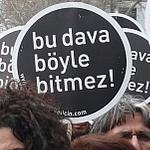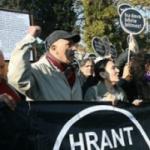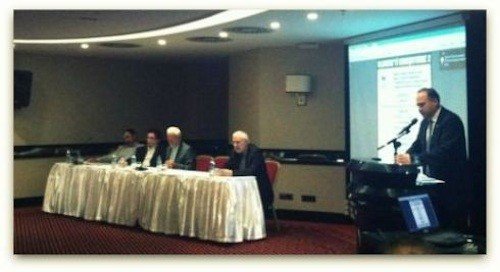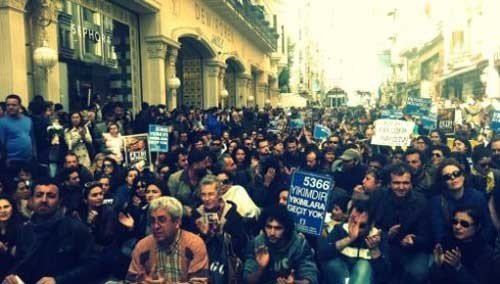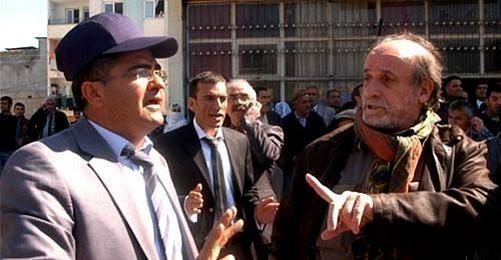At the end of the fifth year of the Hrant Dink trial, President Judge Rüştem Eryılmaz announced "We want to give a decision now". The upcoming hearing on 17 January might be the last one; the trial about the murder of Turkish-Armenian journalist Hrant Dink on 19 January 2007 might be decided.
However, information on telephone records and other data requested from the Telecommunication Communication Presidency (TİB) since 2008 were sent court recently. In a report prepared upon the request of the prosecutor, the police stated that "after an investigation of the TİB records, no contact between the defendants was detected".
On the other hand, the joint lawyers of the Dink family submitted a four-page petition to court at the Tuesday hearing (10 January) containing information extracted as the result of their own investigation of the data. The petition included attachments with record information.
The petition contains information about five people identified in the records at the scene of incident who had contact with the defendants. Additionally, it points to 14 people who were not at the scene of crime but were called from there by the defendants and suspects.
A new trial might be opened
This information submitted by the plaintiff lawyers might be the biggest proof for the assumption that the Dink murder was committed in an organized manner.
Joint attorney Fethiye Çetin told bianet, "New information requires new research and a new investigation. The court decided to proceed accordingly with the file of the prosecutor's office. There was a meeting with prosecutor Muammer Aktaş who is running the Hrant Dink investigation. He took measures to launch an investigation".
This means that even if the current trial was concluded on 17 January, there is the high probability that a new case would be opened.
Lawyer Çetin explained, "All findings will be investigated if a number of new findings emerge. At this stage, the mission of the police is very important. If findings emerge, a new trial can be opened. Even if the Dink trial was pending at the Court of Appeals, the trials could be merged".
The petition read, "It was determined that some conversations were made via certain phone numbers on the day and time of the offence and at the scene of incident. These phone numbers were used very frequently and have a direct connection to defendants Mustafa Öztürk and Salih Hacisalihoğlu".
The plaintiff lawyers claimed at court that this information had to be secured since it was potential evidence required for the investigation. "We request measures to obtain records for the duration of five months before and after the incident regarding all numbers on the list and phone records from the scene of incident used on 18 and 19 January", they said at the last hearing.
14 people with connections to the defendants
The petition submitted to court related to the request to take according measures included the following information:
* The records sent by TİB include 6,235 telephone conversations and 9,300 phone numbers. It is not correct that none of the related persons had any connections to the defendants tried before this court. It was determined that some phone numbers included in these records had a direct connection to the defendants.
* Some numbers are directly connected to our defendants Mustafa Öztürk and Salih Hacısalihoğlu and were used for many phone talks. It was also determined that certain phone talks were made with these numbers on the day of incident around the time of the offence at the scene of crime.
* It was revealed that five people (or their phone numbers) who were in the area on the day of crime have a direct connection to the defendants and that they talked to them several times on various dates prior to the day of crime.
* Five people who had connections with the defendants and were at the scene of crime could easily be identified during the study of the received records. Besides, 14 people were determined who were not in the area but were called from there and again had connections to the defendants and suspects.
* Moreover, the list in Attachment 1a includes individuals who were in direct touch with the defendants. Attachment 1b gives a list of names of people who were in contact with these individuals and present at the scene of incident. Therefore, the data on the names and phone numbers of Attachment 1b should be preserved since it is deemed necessary for the investigation of the HTS records.
'We found what the police was not able to see"
The most important request of the petition is the preservation of data because the numbers and records might be evidence. Yet, there is the risk that TİB will erase the data due to a limitation of time. In an interim decision given by court on 26.12.2011 this request was met with a decision to maintain the data. Hence, there was no need for a new decision, it was said.
But this is not correct. The new request for the preservation of data was made for a broader court injunction that would provide the inclusion of new information into the case. The Dink lawyers now question: "If we were able to discover the connection to these 14 people in such a short time, why could the police not see it with their much advanced technical means?"
Was this a mistake? The lawyers do not think so: "As a matter of fact, it was very difficult and took very long for us to receive the records. The Istanbul Police announced that they could not extract any data from the records. Taking both facts into account, it has to be noticed that the Istanbul Police Directorate insisted on their position regarding the obstruction to reveal a misguidance of the judiciary, the concealment of evidence and the substantial truth", the plaintiff lawyers criticized.
The developments in the Dink trial in the upcoming days might be a new beginning instead of the end. (IC)








